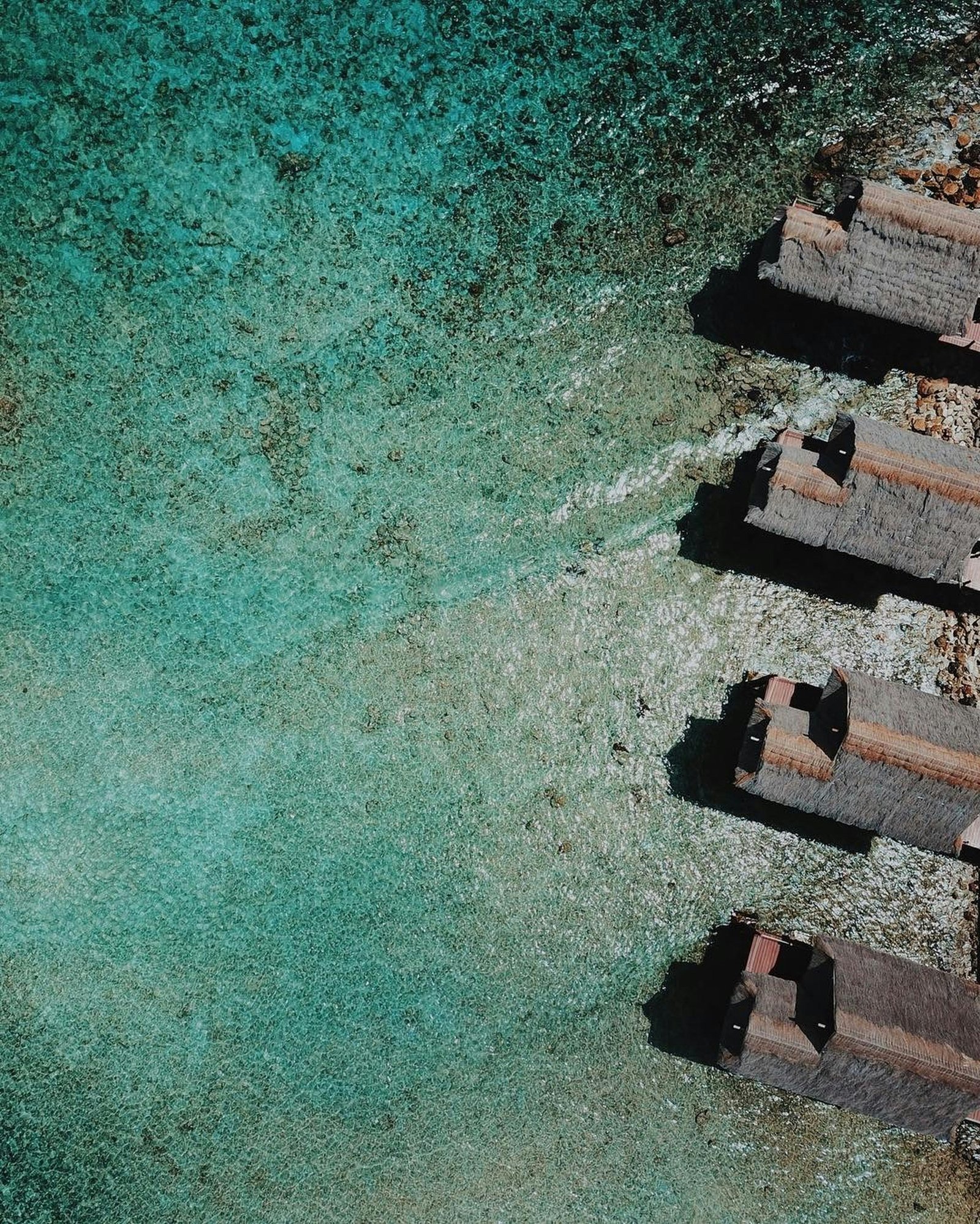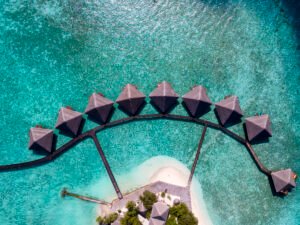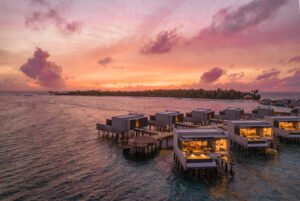Dolphin Watching: Where and How in the Maldives
Introduction to Dolphin Watching in the Maldives
Dolphin watching in the Maldives represents a captivating amalgamation of natural beauty and marine biodiversity, attracting tourists from around the globe. This activity has gained immense popularity among visitors seeking unique experiences that showcase the vibrant underwater ecosystem of the Maldivian archipelago. With its warm tropical waters and varied marine environments, the Maldives serves as a sanctuary for several species of dolphins, enriching visitors’ opportunities for interaction and observation.
The most commonly observed species in these waters include the Spinner dolphin, Bottlenose dolphin, and Risso’s dolphin. Spinner dolphins are particularly well-known for their playful acrobatics, often performing spectacular spins and leaps, which delights onlookers. In contrast, Bottlenose dolphins are recognizable by their social behavior and intelligence, frequently seen in pods swimming alongside boats. Risso’s dolphins, with their distinctively rounded heads and scarred bodies, add to the diversity of dolphin species that can be encountered.
In the Maldives, these dolphins typically inhabit the outer atolls and shallow lagoons, where they can be easily spotted while swimming gracefully through the azure waters. Their behaviors, such as feeding, socializing, and breaching, offer unique insights into the complex social structures and interactions of these intelligent marine mammals. Local tour operators often provide guided expeditions specifically designed for dolphin watching, which not only facilitate intimate encounters between tourists and dolphins but also educate participants about the ecological importance of these creatures.
The experience of dolphin watching in the Maldives is enhanced by the breathtaking surroundings of pristine beaches and clear waters, creating an idyllic setting for an unforgettable experience. Witnessing the elegance of dolphins in their natural habitat forms a profound connection between humans and the marine environment, emphasizing the importance of conservation efforts in protecting these remarkable species and their ecosystems.
Best Locations for Dolphin Watching in the Maldives
The Maldives is known for its stunning marine biodiversity, making it an ideal location for dolphin watching. Among the best spots for this activity are the South Male Atoll, Baa Atoll, and Ari Atoll, each offering unique opportunities to witness these magnificent creatures in their natural habitat.
South Male Atoll is particularly popular due to its proximity to the capital, Malé, and several resorts that provide organized dolphin-watching excursions. Here, you’ll find both spinner and bottlenose dolphins, which are frequently sighted during early morning or late afternoon boat trips. The calm waters surrounding the atoll enhance visibility, making it an excellent location for capturing stunning photographs of dolphins in action.
Baa Atoll, a UNESCO Biosphere Reserve, is another prime location for those keen to observe dolphin behaviors. This atoll’s diverse marine ecosystem attracts a wide range of dolphin species, including the playful spinner dolphins known for their acrobatics. Visitors often report sightings during boat tours, especially from November to April, during which sightings tend to be more frequent due to favorable weather conditions.
Ari Atoll is well-regarded for its exceptional underwater visibility and vibrant marine life. This area is not only a hotspot for dolphin watching but is also home to an extensive range of reef sharks, manta rays, and tropical fish. Dolphin tours conducted here generally provide comprehensive insights into the local ecosystem, enhancing the experience for participants as they learn about the interconnectedness of the marine life surrounding the Maldives.
When selecting a dolphin-watching tour, it is advisable to choose operators who prioritize responsible environmental practices. Early morning tours during the dry season tend to yield the highest chances of encounters with dolphins. By taking these factors into account, every traveler can optimize their dolphin watching experience in the mesmerizing waters of the Maldives.
How to Plan Your Dolphin Watching Experience
Planning a dolphin watching experience in the Maldives requires careful consideration to ensure both enjoyment and sustainability. The optimal times for dolphin sightings generally occur during the early morning or late afternoon, as these are the hours when dolphins are most active. The months from November to April tend to offer the best visibility and calm waters, enhancing the likelihood of successful sightings.
Selecting the right tour operator is crucial for a memorable experience. Research reputable companies that prioritize safety, conservation, and educational value. Many operators offer half-day or full-day excursions tailored to different interests. Additionally, seek out those with small group sizes, as this can minimize disturbances to the dolphins and provide a more intimate experience. Reading customer reviews and asking for recommendations can help identify reliable tours.
During the excursion, it is essential to be prepared for varying conditions. Pack essentials such as sunscreen, biodegradable products, light clothing, and refreshments. Also, familiarize yourself with the safety practices recommended by the tour operator, including wearing life jackets and following guidelines on marine interactions. Sightings may require patience; it is important to remain calm and respectful of the animals’ space.
Responsible tourism plays a significant role in protecting dolphin habitats and contributes to the sustainability of the activity. Tourists should avoid excessive noise, refrain from feeding or attempting to touch the dolphins, and keep a safe distance when observing them. Furthermore, adhering to local regulations regarding dolphin watching is critical, as these measures are in place to safeguard these magnificent creatures and their ecosystem.
Overall, an informed and respectful approach to planning your dolphin watching experience can lead to a rewarding adventure while supporting the conservation of these beautiful marine mammals in the Maldives.
Conservation Efforts and the Future of Dolphin Watching
Dolphin watching in the Maldives has become a significant attraction, enticing numerous tourists each year. However, with the increase in tourism comes the responsibility to ensure the protection of these intelligent marine mammals. The impact of human activity on dolphin populations cannot be underestimated. Factors such as boat traffic, pollution, and habitat destruction pose threats to their survival, thus making conservation efforts critical.
Local and international conservation programs play an essential role in protecting dolphin populations in the Maldives. These initiatives include monitoring dolphin habitats, establishing marine protected areas, and conducting research to maintain sustainable dolphin populations. Organizations collaborate with local communities to raise awareness about the ecological significance of dolphins and promote eco-friendly tourism practices. By encouraging responsible dolphin watching, these programs aim to minimize disturbance and ensure that dolphins remain in their natural habitat.
Tourists can also contribute significantly to the conservation of dolphins. By opting for eco-certified dolphin watching excursions, visitors can support companies that prioritize sustainable practices. These responsible operators adhere to specific guidelines, such as maintaining a safe distance from dolphins and limiting the number of boats in the vicinity. This ensures that dolphins are not stressed or displaced from their natural movements. Furthermore, tourists are encouraged to participate in educational programs that highlight the importance of preserving marine biodiversity, fostering a deeper connection to the natural world.
As the demand for dolphin watching continues to grow, it becomes increasingly vital to advocate for ethical practices within the industry. Promoting responsible tourism not only protects dolphin populations but also helps sustain the livelihoods dependent on this beautiful ecosystem. Through combined efforts, it is possible for future generations to experience the wonder of dolphin watching in a manner that is both fulfilling and respectful of these magnificent creatures.






